I settle into my seat on the 76 train to Toronto - the ViaRail out of Windsor, to be exact - and I am quickly carried into the dense forest that is civilization. We are out of view of the developed area within minutes, but public transit only makes me more aware of my connections and interdependences with a mass of strangers around me.
My country is in the rearview mirror. Literally, I look back as the train departs and I see Detroit’s buildings standing tall and resolute together, stone monuments on the other side of the abyss that is the international border. Fitting that this gateway to my country is commercial, as the U.S. has been bought, though only partially paid for, by big business. Downtown skyscrapers are the face of America’s cities - the country’s facade despite being relegated generations ago to second class status in national politics. They well represent the commercial economic soul of America, though in the post-industrial, global era, the stone is more fossil than monument.
In this rearview mirror, objects are farther away than they appear. I crossed the border for a 6-day vacation and immediately felt relief from the dysfunction and bitterness that prevails in our national discourse. You could not have a nicer neighbor than Canada, and a Canadian family provided me with transportation from the tunnel bus to the rail station and their own phone number in case I had any problems in Toronto.
“Problems” in Canada? I smile. Toronto is likely the antidote for the special kinds of problems I now have, thank you. The combination of desperation and resignation of living under the corporate raiders who hijacked our national government hovers over me. They poke holes, one by one, in each of the norms on which our nation has gently been carried; they have rendered civility irrelevant, a disadvantage. In a free society, people have to choose to work together, or some other force - government, or private - will have to take over. With civility a bad thing, I am “The Enemy Within”.
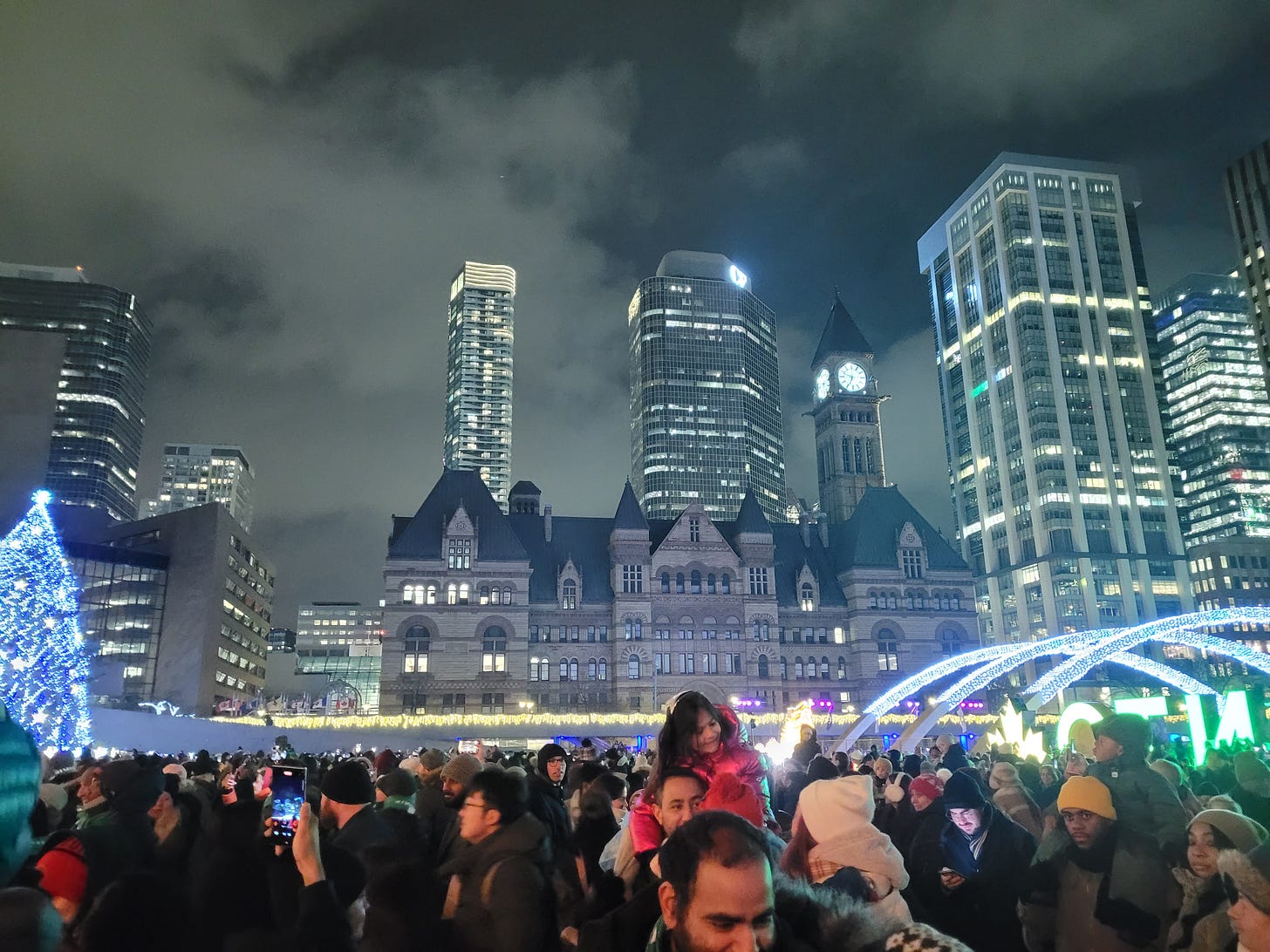
I am deep in an old growth forest, tunneling through unknown territory on this train. Little light enters, and a host of strange life forms risk tripping me underfoot.
I’m thinking of the deep divisions that pulled my hometown apart. They came with an exodus of business and people, which took the rug out from under my home neighborhood and city life in general. I’ve been an object of suspicion because I remained there, and I’ve known relentless duress working for an insolvent employer as the city of Detroit collapsed under the burden. I’ve already known deep division in every part of my life.
That morass floats freely above distant tree crowns. I go on vacation so I can feel connected to different communities, to experience strange people and places. It expands my perspective and confirms my humanity. For an instant, I am woven into a fabric by elegant systems and processes. Civility is both the connection and the active appreciation for the connection.
If civilization is a state of mind as much as of infrastructure, then it’s something like a forest. I’ve never known much of forests in Detroit; all the trees in my neighborhood were taken down when I was about seven, and Dutch Elm swept through. (Read what that meant to me, in this 2023 blog: https://janetanderson1965.substack.com/p/when-all-the-trees-were-cut-down.) We drove through Belle Isle Park’s forested acres and figured that a forest was just a bunch of trees, tall and enveloping.
Forests are more than that, they are communities with the seasons and cycles that humans and their communities have. I enter Toronto through its Union Station, built for intercity rail. Now, the city has such a variety of mass transit options serving a vastly expanded footprint, like GO trains, streetcars and buses, and 72 million passengers per year pass through the station. As in American cities, the number of independent suburbs increased from 1912 until 1953, and the city did not annex them. Unlike in America, Toronto not only adopted a Metropolitan government in 1953 to administer shared services like roads, sewers and other infrastructure, but amalgamated all jurisdictions in the Metro into a single spatially larger City of Toronto in 1997. They adapted and grew on the world stage as a result: from 1.75M people in 1960 to 6.4M in 2020. The communities pay into the same pot.
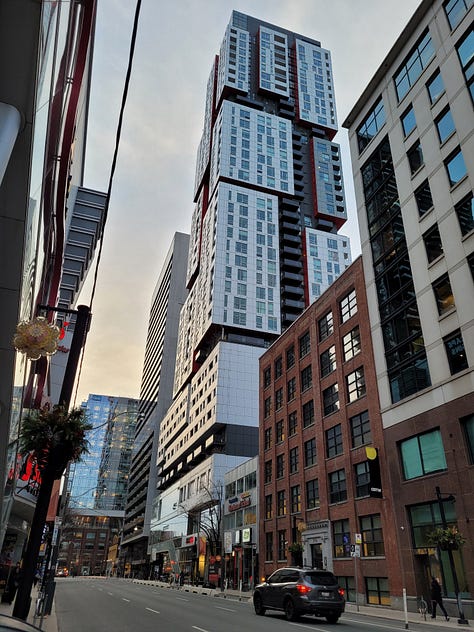
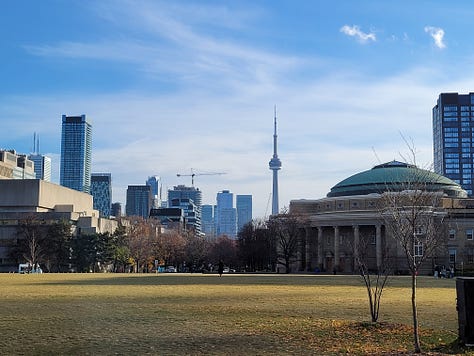
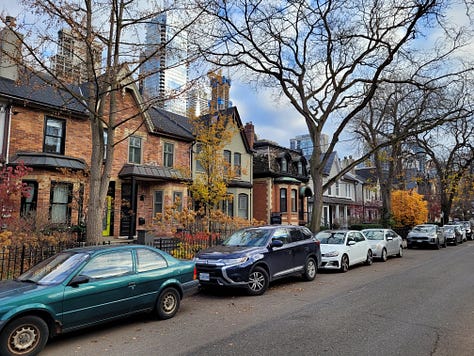
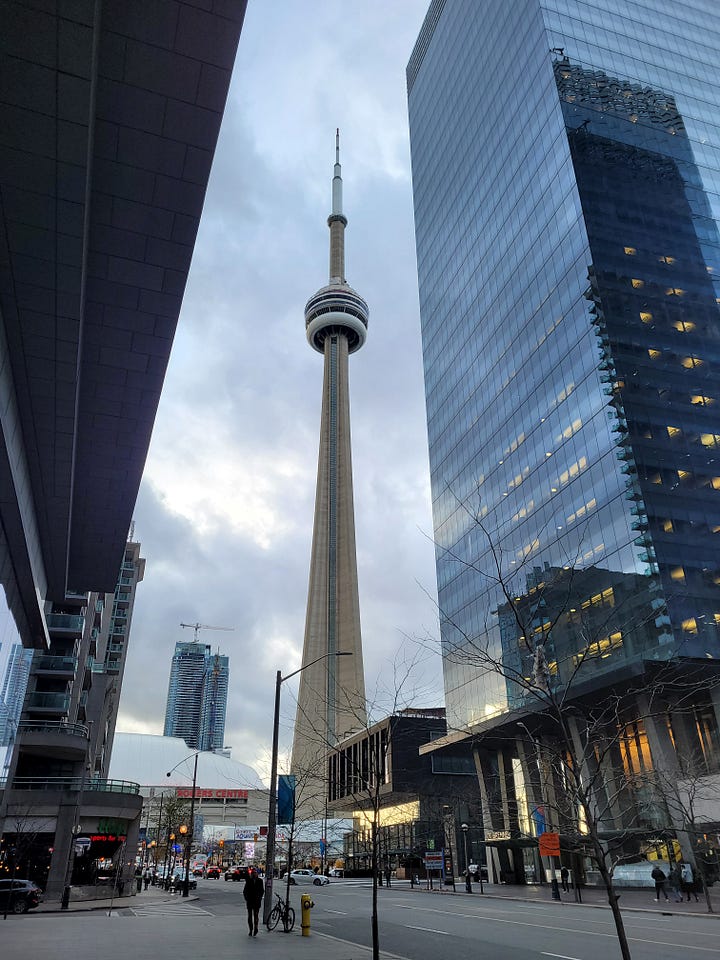
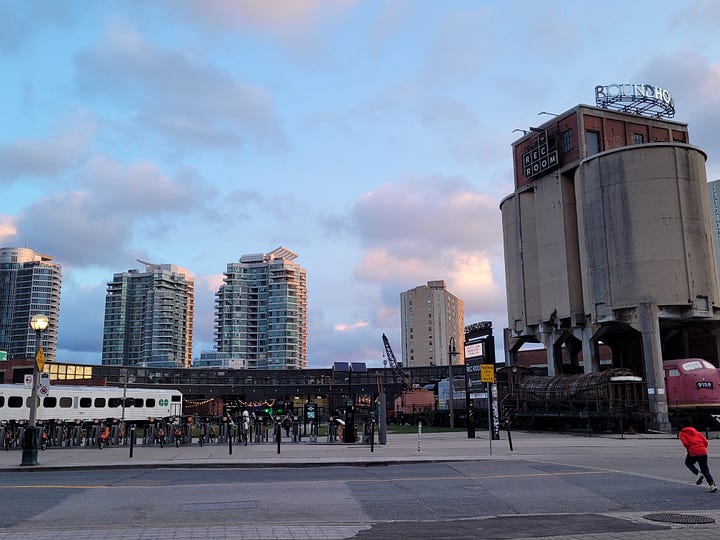
Toronto continues to see such growth into a world city, that it literally looks like it’s sprouting trees. High-rises loom over every part of the city, not solely in the central downtown district like in old U.S. cities. They are architecturally varied and interesting (above). Like in a forest, the growth of these high rises heightens its canopy, but the new and improved can kill off older housing (the slow-growing trees) and thin the forest. If neighboring trees touch, then less energy can reach lower layers like small scale storefronts. This just invites more upscale, modern high rises.
Trees in a forest, like buildings or neighborhoods in a city, can also die from diseases. Gaps in Toronto’s forest ecology are evident in the number of homeless in view. In part, increasing rents that have accompanied condo developments have driven rents up. When homeless shelters are full, homeless (“unhoused persons”) are steered to city parks where they are supported by the government with tents and wrap-around services (example location below). In 2024, the number of encampment sites tripled to 72 citywide, housing 202 people (still less than the pandemic high of 291 people counted there). Yea, that’s all. Toronto’s light reaches the forest floor.

To be in a dense old-growth stage forest: people travel far and wide to commune with them. Mature forests are a rich natural organism that reveal a divine order and majesty. They inspire belief in the sacred. I think how National Park founder John Muir evangelized this central purpose because of how inspired he was in these kinds of places. I feel the same evangelism about the manmade on display in cities.
In urban terms, the mature, old-growth cities are the ones that work to protect their advantage. These cities absolutely thrive on the diversity that fosters ecological health. They offer their own rich palette of amenities comparable to wildlife and fisheries, recreation, soil productivity, water quality and aesthetic beauty supported by a natural forest.
All of life becomes older. Manufacturing cities have obsolesced and died a thousand deaths. But like the forest allowing understory trees in the right positions to grow at their own stages and in all sizes, cities have offered the blank canvas on which innovation and cultural expression can take flight. They live, grow, die - and the cycle continues.
Forests are much more than just a collection of trees, just as cities and nations are more than just a bunch of people. It isn’t a particular tree that makes the forest, any more than a particular individual defines the city (or country!) - or than a group of people can destroy the foundation of civil life. We have to allow this destruction to happen.
“If a tree falls in the forest…” - that has been a less interesting scenario to me than if a forest falls around its trees. I’ve seen Detroiters and their households keep it together when the City collapsed and everyone else abandoned us. How much a tree can endure and still stand proudly. The lifecycles of human freedom and community are just as resilient as in nature. I saw such a place this week.




Beautiful and poignant essay Jan.
Your losses are staggering, but you haven't lost your friends and admirers!
Beautifully written, as always. Americans are now all "...living under the corporate raiders who hijacked our national government..." and must find solidarity in each other. Thank you for putting so many of my own thoughts into words.